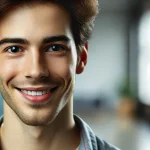Physical barriers to Communication are any obstacle or condition that prevents or hinders the effective exchange of information between two or more people. This type of barrier can be tangible or intangible and can occur in various forms, such as distance, noise, environment, language, or technology.
Contents
What are Physical Barriers to Communication
Physical communication barriers include the geographical distance between the sender and receiver, loud background noise, poor lighting or visual distractions, language differences, and malfunctioning equipment.
These barriers can make it challenging to convey messages accurately, lead to miscommunication, and cause frustration or misunderstanding among individuals involved in the communication process.
How Does the Physical Environment Affect Communication?
In our daily interactions, we communicate with people in various settings. Communication is exchanging information, ideas, or thoughts between two or more people. While the content of our Communication is important, the environment in which we communicate can also significantly impact the effectiveness of our Communication.
Factors That Can Create A Physical Barrier
Physical barriers can be a range of environmental factors from geographical distance and technological issues to architectural design and sensory impairments that disrupt the clear delivery and reception of messages
Here are some factors that can create a physical barrier:
Geography and Landscape
Mountain ranges, bodies of water, deserts, or dense forests can create natural physical barriers. These often restrict or slow the movement of individuals, animals, or goods.
Climate and Weather Conditions
Extreme weather conditions like hurricanes, snowstorms, or heat waves can create temporary physical barriers. Floods or landslides can also be physical barriers, preventing movement and access.
Infrastructure and Built Environment
Walls, fences, highways, buildings, and other artificial structures can act as physical barriers. These can range from security fences around private property to international border walls.

Urban Planning
The layout of cities and towns can create physical barriers, particularly for individuals with mobility impairments. Lack of ramps, inaccessible public transport, and buildings without elevators can prevent easy access.
Resource Availability
Limited resources or materials can create a physical barrier. For example, a construction project needs more essential materials to halt progress as a barrier to completion.
Health and Physical Condition
Individual health status or physical conditions can create personal physical barriers. For example, individuals with mobility impairments might find staircases, uneven surfaces, or long distances to be physical barriers.
Pollution
Environmental pollution can also be considered a physical barrier. High levels of air pollution, for instance, can prevent outdoor activities. Similarly, water pollution can make water bodies unsafe for recreational or other uses.
War and Conflict
In times of war or conflict, physical barriers such as walls, trenches, or barricades are often created to defend or control movement.
Technological Factors
Not necessarily technology can also be a physical barrier. For instance, a lack of transportation technology in a remote area can make travel or material transport difficult.
Personal Anecdote
Consider Lisa, who struggled with poor lighting in her workspace, leading to frequent miscommunications. By improving the office lighting, Lisa and her team experienced better communication and productivity.
Expert Insights
Dr. John Smith, an expert in communication, emphasizes, “Addressing physical barriers is crucial for ensuring clear and effective communication in any environment.”
Practical Tips
- Ensure Good Lighting: Improve lighting to enhance visual communication.
- Minimize Noise: Use soundproofing or quiet areas to reduce noise.
- Use Visual Aids: Diagrams and charts can help convey messages.
- Be Mindful of Disabilities: Adapt communication methods to meet the needs of individuals with disabilities.
Quarantine and Isolation Measures
During a disease outbreak, physical barriers are often put in place to prevent the spread of disease. This could include isolation wards in hospitals or even large-scale quarantine zones.
Physical barriers can arise from a variety of factors, both natural and artificial. Overcoming these barriers often requires considerable effort and resources, depending on their nature and scale.

Physical Barriers to Communication
Examples
Physical communication barriers are obstacles in the environment that impede the transmission of messages, such as distance, noise, poor lighting, and physical obstructions. Here are eight examples of physical communication barriers:
Noise
Loud or distracting noise can interfere with verbal Communication. For example, employees may have trouble hearing each other in a noisy factory.
Workspace design
Cubicles or closed office layouts can limit face-to-face interactions and reduce the flow of information. Open office designs can improve communication.
Technical difficulties
Technical difficulties, like poor internet connection or malfunctioning devices, can disrupt communication. Regular maintenance and updates can mitigate these issues.

Distance
Physical distance can make communication challenging. For example, employees in different time zones may have trouble scheduling a video chat.
Weather
Extreme weather can affect Communication. For example, heavy rain or snow can cause transportation delays, making it hard for employees to attend important meetings.
Interrupting
Interruptions can create a physical barrier to Communication. For instance, frequent interruptions from co-workers or phone calls can distract from the conversation.
Body language
Body language is critical to Communication, but physical barriers can hinder interpretation. For example, it can be challenging in a video chat to pick up on subtle cues like facial expressions and body language.
Written Communication
Written Communication can also create physical barriers. For instance, if a sender intended to convey humor through an email, the recipient may misinterpret the message as critical.

How to overcome physical barriers in Communication?
Ensure Good Lighting
One of the most common physical barriers to Communication is poor lighting. Poor lighting can affect the clarity of visual Communication, making it difficult for people to understand what is being communicated.
To overcome this barrier, ensure adequate lighting in the room. This will create a comfortable environment for Communication to take place.
Use Appropriate Language
Language barriers can be a significant obstacle to Communication. When communicating in a language that is not your native tongue, try to use simple and concise language. Avoid jargon, idioms, or technical terms that may be difficult for others to understand. Use a translator or interpreter to ensure the message is conveyed accurately if necessary.
Minimize Noise
Noise can be a significant barrier to Communication, making it difficult for people to hear what is being said. Whether it is background noise or other people talking, it can be frustrating for both the speaker and the listener. To overcome this barrier, try to minimize noise by finding a quiet location for Communication.
Use Visual Aids
Visual aids can be a great way to overcome physical barriers in Communication. Visual aids can help convey information more effectively, especially when language barriers exist. Use diagrams, charts, or graphs to help illustrate your message.
Be Mindful of Disabilities
People with disabilities face unique challenges when it comes to Communication. For example, people with hearing impairments may rely on sign language or lip reading to understand what is being said.
To overcome this barrier, be mindful of the needs of people with disabilities and ensure that Communication is adapted to meet their needs.
Seek Feedback
Seeking feedback is an effective way to overcome physical barriers in Communication. Ask the person you are communicating with if they have understood your message. If you still need to, ask them to repeat it to you to ensure they have understood it correctly. This will help ensure that Communication is effective and the message is conveyed accurately.
Physical barriers in Communication can be frustrating, but they can be overcome with the right approach and communication skills. Good lighting, appropriate language, minimizing noise, using visual aids, being mindful of disabilities, and seeking feedback are all effective ways to overcome physical barriers in Communication.
By using these techniques, you can ensure that Communication is effective and the message is conveyed accurately.
References:
- Smith, J. (2021). Effective Communication Strategies. Communication Journal.
- Brown, A. (2020). Overcoming Physical Barriers. Harvard Business Review.
Boko Ducky has over 10 years of experience in helping individuals and organizations improve their communication skills.



